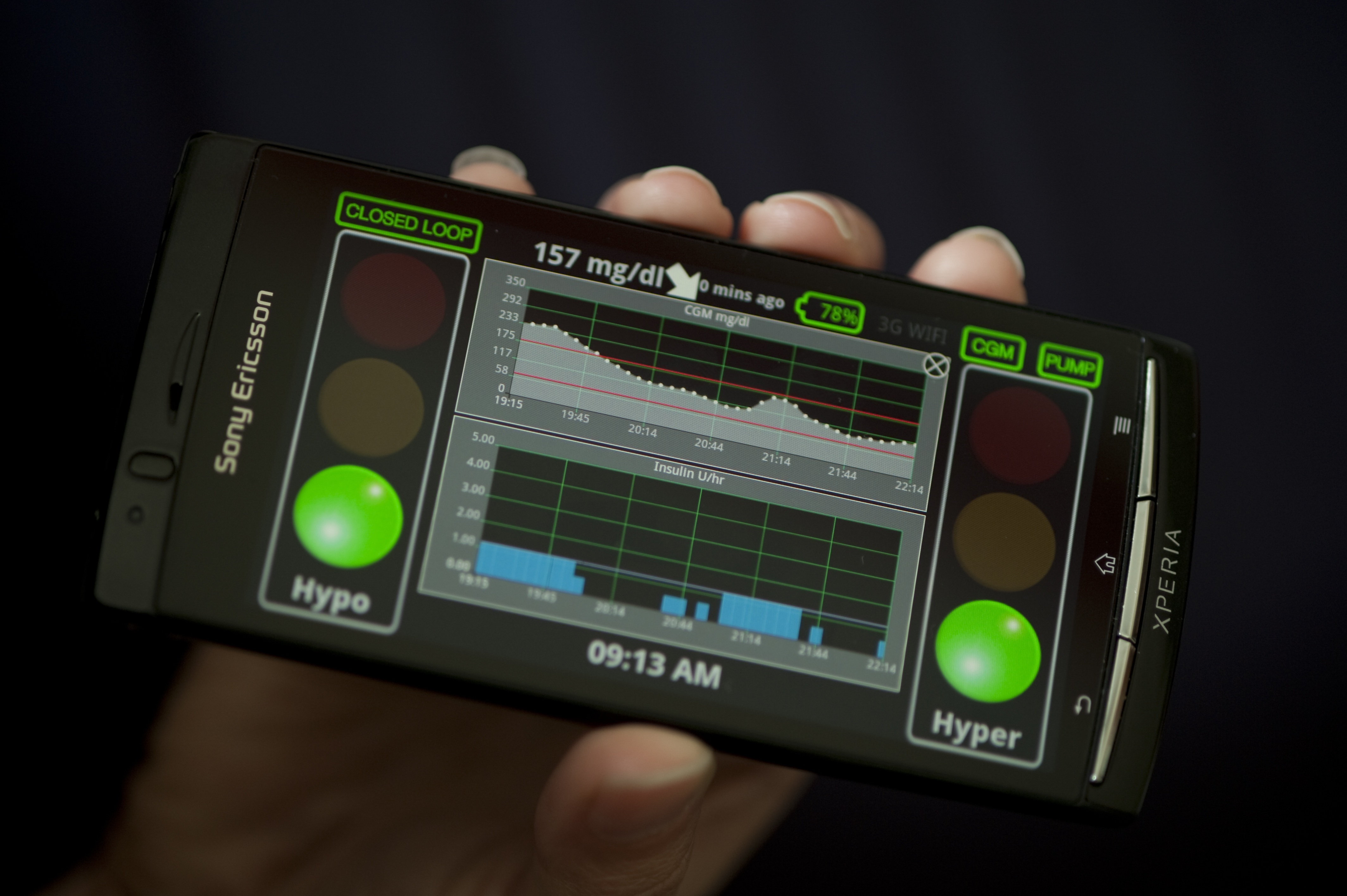A high-tech University of Virginia project to turn an ordinary smartphone into an artificial pancreas that could transform the lives of people with type-1 diabetes has received a $3.4 million grant from the National Institutes of Health.
The money will fund a new network approach to artificial pancreas design using distributed computing between local and Cloud systems that will allow real-time adjustment of insulin delivery based on the individual’s needs. The grant will also fund three clinical trials at U.Va. and at Stanford University that will advance the project toward its final goal of offering people with type-1 diabetes – in which the body does not produce enough insulin – an automated way to monitor and regulate their blood sugar.
“This project approaches the artificial pancreas not as a single device, but as a network of local and global services working seamlessly together toward the optimal control of diabetes,” said Boris Kovatchev of the University of Virginia School of Medicine.
The artificial pancreas was developed at the School of Medicine by a team of researchers led by Kovatchev, the director of the U.Va. Center for Diabetes Technology, and Patrick Keith-Hynes. The device consists of a reconfigured smartphone running advanced algorithms, linked wirelessly with a blood glucose monitor and an insulin pump, and communicating with Internet services in real time.
The system’s developers intend for it to monitor and regulate blood-sugar levels automatically, report to a remote-monitoring site and link the user with assistance via telemedicine as needed. This would save users from having to stick their fingers to check their glucose levels multiple times a day and eliminate the need for countless syringes to inject insulin manually.
The physicians on the team – Dr. Bruce Buckingham of Stanford, and U.Va.’s Dr. Stacey Anderson and Dr. Sue Brown – have tested the artificial pancreas system in successful outpatient trials in Virginia, California and in Europe.
One trial participant, Mike Anderson, described his experience testing the device in a post to a blog for diabetes patients: “For 24 wonderful hours, I felt like Iron Man – without the cool cars, the ability to fly, the Malibu mansion or the lifestyle of Robert Downey Jr.,” he wrote. “But the experience was still ‘Super Hero-like’ for someone like me who has battled the ‘Super Villan’ Type 1D for 14 years and been unable to achieve consistent glucose control. The [artificial pancreas] is not a cure for diabetes, but it does offer a solution or pathway to better health outcomes for the 3 million Americans living with Type 1 diabetes.”
As many as 3 million Americans suffer from type-1 diabetes, according to the Juvenile Diabetes Research Foundation. Each year, more than 15,000 children and 15,000 adults – approximately 80 people per day – are diagnosed in the U.S., leading to nearly $15 billion in annual health care costs.
The grant money from the National Institutes of Health will enable researchers at U.Va. to implement a new network approach to the artificial pancreas system known as the Diabetes Assistant. Clinicians at U.Va. and Stanford will then test the artificial pancreas in both adults and children. Adult testing will be done at U.Va., while Stanford will conduct the pediatric studies.
The development of the artificial pancreas was supported by Paul and Diane Manning of Charlottesville, the Frederick Banting Foundation of Richmond and by the Juvenile Diabetes Research Foundation’s Artificial Pancreas Project.
The Artificial Pancreas Project has brought together researchers from U.Va.; Stanford; the University of California, Santa Barbara; Montpellier University Hospital in France; and the universities of Padova and Pavia in Italy.
Media Contact
Article Information
November 19, 2013
/content/uvas-artificial-pancreas-project-receives-34-million-grant

